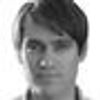This week my first feature film, Hood to Coast, will have its world premiere at the SXSW Film Festival.
Hood to Coast follows four unlikely teams on their epic journey to conquer the world's largest relay race in Oregon, USA. Each year 1000 teams (12,000 runners) in 2000 vans cover 197 grueling miles as a relay team, putting themselves through an arduous physical journey that as an individual would be impossible.
Now, I am not a runner. Although I've known for a long time that I wanted to be a film director, I never anticipated that my first film would be about a sport that I knew very little about. When my wife dragged me up to Oregon to fill a spot on a team running in the world's largest relay race, and my father-in-law told me this was the greatest adventure ever, all I could think was, how am I going to run 17 miles?
By the time we had made it to the first runner's exchange, I knew that there was a magic to this event that needed to be captured, an energy and supportiveness that you rarely encounter. For 197 miles, we ran on adrenaline, peanut butter and jelly sandwiches, and the energy and excitement of six people in a stinky van, most of whom I had never met.
It was the bizarre quality of my own story that got to me -- a German film editor suddenly running through the backwoods of Oregon, without stopping just because it was dark, with no sleep, and surrounded by 12,000 other people, many costumed and living out of decorated vans, all attempting the same abnormal feat. The story wasn't the running itself -- that part hurts and gets repetitive fast, there's no movie there. But suddenly, stuck in a van for 36 hours, I was living an alternate life with characters I couldn't have dreamed up, and I knew that if I was having this sensation, then there were 12,000 stories that could be told, and all we needed to do was find them.
We spent months doing phone interviews, not only learning about the race but the people who ran it. The race itself is mind-boggling; 197 miles long, you run in teams of 12. 1000 teams participate in the 36 hour long endeavor with little to no sleep -- and you have to run, not once, but three times. Over the nearly 30 years that the race has been going on, it has become a must-do for amateur and professional runners alike because it is unique in the running world.
But it was the people that interested me. As we spoke to these runners (and non-runners who would be running), incredible stories surfaced. Athletes, non-athletes, first-timers, seasoned veterans; all shared their stories with us. All expressed their excitement that a film would be made about an event. Finally we settled on the heart attack survivor, a team who trained by drinking beer, a family in mourning, and a team of aging jocks. We felt (we hoped) that these four teams would capture the broad life spectrum present in the race, the fun and the pain.
We put together an amazing crew between the talented shooters and crew in Portland and the imported crew that traveled from Los Angeles for the two days of the race. Since I could only be in one place at a time, I had to trust that they would know what to do as they covered the incredible length of the race course, and I knew I could trust them to find the stories that would make the film something more than a snapshot of an event, but the story of why people would put themselves through a bizarre mental and physical test.
As you go through the process of making a film, each choice you make ends up on the screen. With each choice, like with each step in the race, you have to stay aware of the prize and sometimes force yourself through the pain. Two years after I first ran the race, with the support of a group of people who have trusted my passion and embraced my first feature experience, we have a movie that I am extremely proud of.
To be honest, until we heard that we would be playing at the South By Southwest film festival, I don't think we understood that all we'd poured into the film had actually made it to the screen. With the incredible vote of confidence that the festival's programmers believed in these stories as much as we did, I find myself launching into another wild adventure as I attend SXSW for the first time with my first feature film.
We didn't make a "sports" film, but a character driven piece about triumph over adversity, even when the adversity is something we put ourselves through. As we go into the festival, I hope we've captured the spirit of the Hood to Coast race in a way that appeals to everyone and makes the audience want to do something outside of their comfort zone.
I also hope that it appeals to all of our need to share genuine human stories of endurance and that they fall for these people as we did while making the film. With a nationwide release planned for August, SXSW gives us the opportunity to preview the film for a distinguished group of film lovers. Hopefully we'll share these stories with many other audiences as we go forward and learn more about ourselves in the process.
